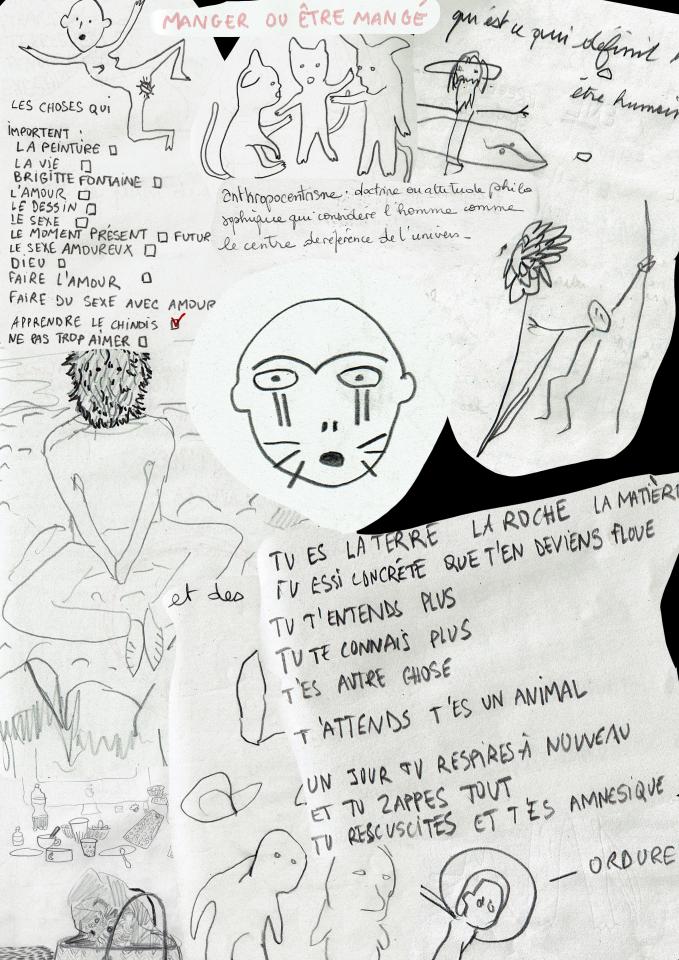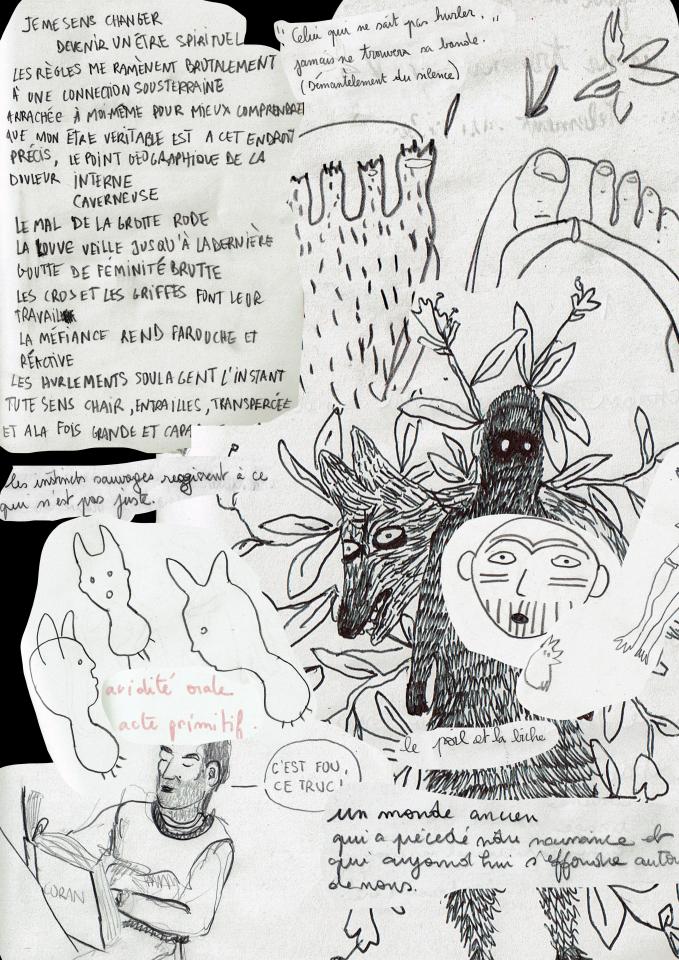This is a monkey that does not run on its hands and feet, but rather on vital energy and on the vivid memory of its prehistory. Chloé Robert has brought it to the surface using her claws. This is why a dark blade can be felt implicitly cutting through her work. There is a lost world shaking its mane at the surface of the paper. Her artistry comes out of nowhere and it has no time for politeness. In doing so, Chloé Robert strips her practice from academic teachings and their codes. Her method involves her looking for a path to her own source, without waiting for intellectual validation. The act of drawing, which is prevalent in her work, always hinges on the first line that springs from her fingers: if it happens to be there, it is because it is necessary, as are animals and what we call Nature. The figures that appear in her drawings are most often depicted facing the audience. One truly feels looked at, called to, as is the case with her piece depicting a lettuce-man with his hanging tongue and unflinching gaze. He lives in a dimension that is his and his own species’ – a fact that automatically take us back to our own individual and collective selves, to our way of being human within the world. Another plant-like being looks at us sorrowfully. He seems disappointed in the broken promises of existence. He misses Nature – the real one, the pure one, the ideal one – and remains staring at the chasm of this impossible return. “But it’s all just a dream”, says Chloé Robert.
Marie Birot, 2021.
Translated by Lucy Pons | Biographical notes translated with the support of the Centre national des arts plastiques - Cnap.

